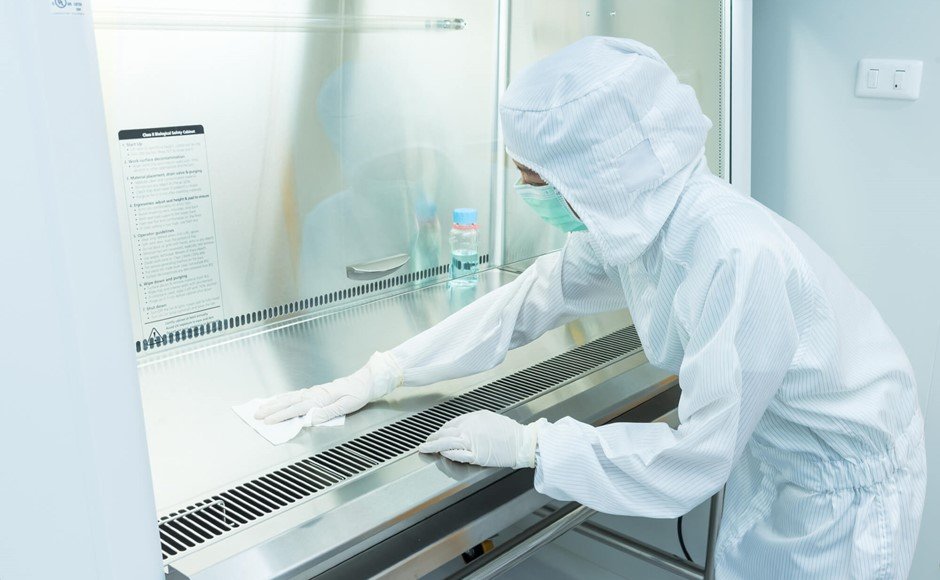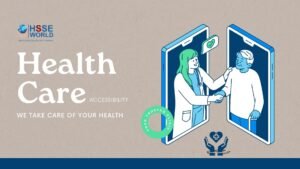Cleaning, Disinfecting and Sterilizing the Workplace To Manage the Coronavirus
5 min readNow that we’re experiencing a global pandemic, we’re all paying more attention to our homes and our workplaces. The surfaces that used to seem so ordinary could now be harboring the COVID-19 virus. This is a problem for those of us who get to work at home, but it’s even worse for the thousands of essential workers continue to show up to work every day, sometimes coming in contact with the public and those who are sick.
We all have an understanding of the way germs, viruses, and other contaminants can impact our workplaces. However, it is now critical that we all remain on the exact same page as the CDC and federal- and state-level public health authorities. They provide the most up-to-date, reliable, and trustworthy information about the spread of infection and what we should do to prevent it.

Preventing the spread of the Coronavirus will involve more than just coughing into our sleeves and keeping six feet apart from others (which many workers cannot do).
It is critical that we all know and understand how to manage workplace health through CDS (cleaning, disinfecting, and sterilizing). That includes knowing the difference between these and implementing them in our daily operational processes.
Cleaning Equipment Isn’t Always Clean
First, a brief word of warning.
We tend to think of cleaning solutions and cleaning equipment as inherently clean. They’re not. They must also be cleaned and disinfected after use.
Think about restaurants for a moment. The cloth the workers use to wipe down the table might be cleaning the surface. But it might also be spreading germs from table to table.
(Find out tips-to-manage-covid-19-in-your-workplace .)
I’ve inspected hundreds of kitchens throughout my career and I have seen dishes hand washed in water that looked more like a soup than a cleaning solution.
Don’t make that type of mistake in times like these. Make sure your cleaning equipment gets cleaned as well. And communicate this fact to workers, because it’s normal to assume that rags, sponges, and mops are clean by default.
CDS: Knowing the Difference
Before discussing procedures and best practices, let’s get clear on the terms we’re using. They’re sometimes used interchangeably, but they differ in important ways.
Cleaning
Cleaning is mostly dealing with all the visible stuff. We’re talking dust, dirt, grime, and gunk.
It’s an essential part of the CDS process, because you should always clean a dirty surface before you disinfect or sterilize it.
Disinfecting (or Sanitizing)
Disinfecting goes below the surface, past the stuff that cleaning deals with. It tackles pathogens (excluding bacterial spores), removing the contaminants from surfaces to ensure they are safe to handle.
Sterilization
Sterilization is the nuclear option, so to speak. It destroys or eliminates all microbes. These are the processes typically used in medical facilities, but that can be applied to other workplaces as well.
Pay Attention to Contact Points
Use soap and water, along with other cleaning chemicals, to clean surfaces, instruments, and clothing.
While we are working to contain the spread of COVID-19, this should be done more frequently than usual. Do it at least daily, but aim for hourly. In some cases, like the grocery stores that station someone to disinfect all the shopping cart handles, you might have to do it even more often.
Take note of all the contact points – surfaces that are touched regularly – and make sure your cleaning procedures target them.
Here is a long but incomplete list of common contact points you will need to consider:
- Door knobs, door handles, locks, and window latches
- Light switch plates and controls, alarm key pads, and swipe card devices
- Cupboard handles and drawer pulls
- Handrails and elevator buttons
- Telephones and other handheld devices, like tablets, radios, and smartphones
- Computers, especially the keyboard, monitor, control pad, and mouse
- Printers and any other devices used to produce and collate reports, binders, or posters
- Remote controls
- Sinks, refrigerators, microwaves, and any other appliances
- Countertops and shelf surfaces
- Buttons, switches, and controls
- Vacuums, mops, mop buckets, and all other cleaning equipment
The list goes on and on. In short, clean everything you or someone else touches with their hands, could cough or sneeze on, or handles routinely.
Contact Time
Now that we talked about contact surfaces, we need to introduce the concept of contact time.
When we’re cleaning a surface, it might not be good enough to just swipe a damp rag on it. We have to use products that are effective for the job. And that product has to stay on the surface for an appropriate amount of contact time (the time it spends on the surface).
How long is long enough? Safety professionals rejoice because there are charts! The EPA helpfully lists products, what they do, and how long (and in what concentrations) they must stay in contact with the surface they’re disinfecting. Check it out here.
Hard Surfaces vs. Fabrics
Cleaning and disinfecting procedures have to take into account the different ways we need to tackle hard surfaces and fabrics.
Both need to be cleaned and disinfected to manage the Coronavirus, but each will require a different approach.
Cleaning Hard Surfaces
For hard surfaces, use disinfecting wipes or solution with alcohol-based formulas. Make sure they contain at least 70% alcohol.
Again, remember the contact time. Make sure the solution remains on the surface long enough for it to eliminate the contaminants. In most cases, you can simply allow the product to air dry, but check the SDS in case you need to rinse the surface after applying the product.
Cleaning Fabrics
Clothing should be washed regularly, ideally on a hot water cycle.
Adding bleach to the wash will help you ensure that the clothing is disinfected. However, make sure that it is safe to use with your clothing (check the label). This is especially the case when washing PPE and high-visibility gear. It’s important to disinfect them, but not in a way that could compromise its protective qualities.
(Find out E-Bookguidance on preparing workplace for COVID-19.)
It is also recommended that you don’t stuff your washing machine. Doing more modest loads will allow the detergent to wash the fabric more thoroughly.
Using the dryer instead of line drying can also help, especially on the hottest setting.
And remember that laundry baskets, hampers, and the washing machine itself should also be disinfected regularly.
Stay Clean, Stay Safe
Safety professionals will need to work closely with their suppliers to obtain the CDS products that best suit their workplaces.
But remember that all cleaning, disinfecting, and sterilizing present their own risks and hazards. Always obtain and consult the Safety Data Sheets before using them. Follow the instructions for use, storage, and disposal. When bringing a new product on site, it is best practice to train or retrain workers in its use.
Stopping the spread of COVID-19 is our collective responsibility. For those of us in the safety world, it’s also our professional duty. Make sure your workplace has proper CDS procedures in place and that they are being followed diligently.
For more information, consult this paper on COVID-19 from OSHA, as well as this cleaning guide by the CDC.



